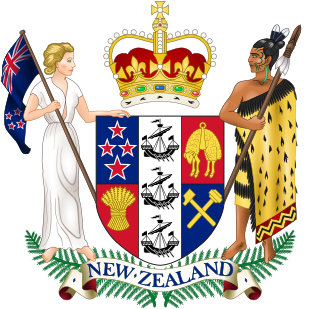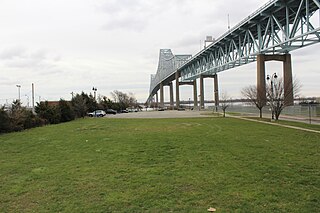 W
WThe oil tanker Amoco Cadiz ran aground on Portsall Rocks, 2 km (1.2 mi) from the coast of Brittany, France, on 16 March 1978, and ultimately split in three and sank, all together resulting in the largest oil spill of its kind to that date.
 W
WThe Antarctic Conservation Act, enacted in 1978 by the 95th United States Congress, and amended by Pub.L. 104–227 (text) (PDF), is a United States federal law that addresses the issue of environmental conservation on the continent of Antarctica. The Departments of the Treasury, Interior and Commerce are responsible for the Act's enforcement.
 W
WThe Convention for the Protection of the Marine Environment and the Coastal Region of the Mediterranean, originally the Convention for Protection of the Mediterranean Sea against Pollution, and often simply referred to as the Barcelona Convention, is a regional convention adopted in 1976 to prevent and abate pollution from ships, aircraft and land based sources in the Mediterranean Sea. This includes but is not limited to dumping, run-off and discharges. Signers agreed to cooperate and assist in dealing with pollution emergencies, monitoring and scientific research. The convention was adopted on 16 February 1976 and amended on 10 June 1995.
 W
WOn 7 June 1978, the Chilean Oil tanker Cabo Tamar ran aground at San Vicente Bay, near Talcahuano, Chile, and released 12,000 tons of oil.
 W
WThe Endangered Species Act (ESA) was first passed in 1973 and forms the basis of biodiversity and endangered species protection in the United States. The original purpose of the Endangered Species Act of 1973 was to prevent species endangerment and extinction due to the human impact on natural ecosystems. The three most powerful sections of the ESA are Sections 4,7 and 9. Section 4 allows the Secretaries of Interior and Commerce to list species as threatened or endangered based on best available data. Section 7 requires federal agencies to consult with Fish and Wildlife Service (FWS) or National Marine Fisheries Service (NMFS) before taking any action that may threaten a listed species. Section 9 forbids the taking of an endangered species. The first amendment to the ESA was passed by the 95th United States Congress in 1978 to "introduce some flexibility into the Endangered Species Act."
 W
WThe Environmental Modification Convention (ENMOD), formally the Convention on the Prohibition of Military or Any Other Hostile Use of Environmental Modification Techniques is an international treaty prohibiting the military or other hostile use of environmental modification techniques having widespread, long-lasting or severe effects. It opened for signature on 18 May 1977 in Geneva and entered into force on 5 October 1978.
 W
WLove Canal is a neighborhood in Niagara Falls, New York, United States, infamous as the location of a 0.28 km2 (0.11 sq mi) landfill that became the site of an enormous environmental disaster in the 1970s. Decades of dumping toxic chemicals harmed the health of hundreds of residents; the area was cleaned up over the course of 21 years in a Superfund operation.
 W
WThe Marine Mammals Protection Act 1978 is an Act of Parliament passed in New Zealand in 1978. It is administered by the Department of Conservation.
 W
WNuclear Non-Proliferation Act of 1978, 22 U.S.C. § 3201, is a United States federal law declaring that nuclear explosive devices pose a perilous threat to the security interests of the United States and continued international progress towards world peace and the development of nations.
 W
WR v Sault Ste-Marie [1978] 2 SCR 1299 is a Supreme Court of Canada case where the Court defines the three types of offences that exist in Canadian criminal law and further defines the justification for "public welfare" offences.
 W
WThe Uranium Mill Tailings Radiation Control Act (1978) is a United States environmental law that amended the Atomic Energy Act of 1954 and authorized the Environmental Protection Agency to establish health and environmental standards for the stabilization, restoration, and disposal of uranium mill waste. Title 1 of the Act required the EPA to set environmental protection standards consistent with the Resource Conservation and Recovery Act, including groundwater protection limits; the Department of Energy to implement EPA standards and provide perpetual care for some sites; and the Nuclear Regulatory Commission to review cleanups and license sites to states or the DOE for perpetual care. Title 1 established a uranium mill remedial action program jointly funded by the federal government and the state. Title 1 of the Act also designated 22 inactive uranium mill sites for remediation, resulting in the containment of 40 million cubic yards of low-level radioactive material in UMTRCA Title 1 holding cells.
 W
WWade Dump was a rubber recycling facility and illegal industrial waste storage and disposal facility in Chester, Pennsylvania. It was located at 1 Flower Street on the western bank of the Delaware River just north of the Commodore Barry Bridge. A toxic fire at the site in 1978 burned out of control for several days and resulted in 43 injured firefighters and criminal charges for the owner of the site. The first responders to the fire suffered long term health consequences and higher than normal cancer rates.